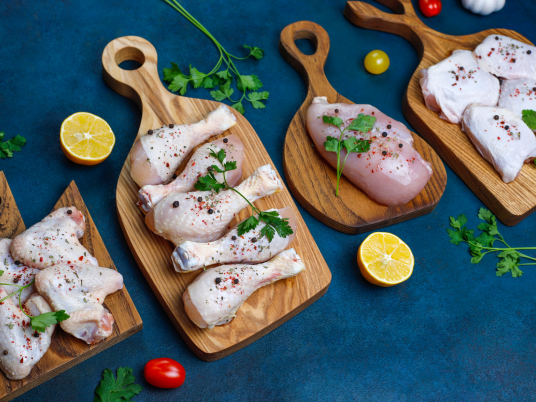Understanding Chicken Parting
Chicken Parting — In the poultry industry, particularly within chicken meat processing, the chicken parting process plays a vital role in determining the quality and commercial value of the final product. Chicken parting is not simply about cutting a whole chicken into smaller sections, it involves precise, hygienic, and efficient techniques aligned with market demands. As consumers increasingly seek specific cuts such as breast fillets, thighs, or wings, mastering the parting process has become essential for businesses in this sector.
Chicken parting typically takes place at a Chicken Slaughterhouse, after the bird has undergone slaughter, feather removal, and internal organ cleaning. This process may be done manually by trained workers or automatically using modern cutting machinery. Each cut adheres to specific standards for size, weight, and shape to ensure consistency and meet market expectations. Other critical factors that affect product quality include room temperature, equipment sanitation, and processing speed.
Beyond the technical aspects of cutting, post-parting handling—such as chilling, packaging, and distribution—is also crucial. These steps help keep the chicken fresh, hygienic, and optimally preserved until it reaches consumers. A well-managed parting process not only increases operational efficiency but also strengthens consumer confidence in product quality.
The Role of Chicken Parting in Chicken Slaughterhouses

The chicken parting process begins once the chicken has passed through slaughtering, defeathering, and evisceration stages. The carcass is then divided into parts based on industry standards and market demand. The primary cuts include the breast, thigh, drumstick, wing, and back. Other parts such as the head, neck, feet, liver, gizzard, and intestines are processed as by-products, often used in broths or processed food products. The goal is to turn a whole chicken into manageable, market-ready pieces that align with consumer needs.
There are two main methods used for chicken parting: manual and automatic. Manual parting involves skilled labor using traditional tools like knives or poultry shears. This method offers greater flexibility and allows for custom cuts and higher precision, such as boneless fillets. However, it is more labor-intensive and time-consuming.
Automatic parting, on the other hand, utilizes modern cutting machines to process chickens with high speed and accuracy. This method is ideal for large-scale production, reduces reliance on human labor, and offers consistent sizing. Although the initial investment in automated systems is higher, it greatly enhances productivity and minimizes contamination risks due to limited human contact. However, automated systems may lack the adaptability needed for custom or specialty cuts.
Best Chicken Slaughterhouse in Bali

The chicken parting process in a Chicken Slaughterhouse is a critical step that impacts the final product’s quality. In a professional, well-standardized facility, the parting process is carried out with a strong emphasis on hygiene, efficiency, and product traceability. Every step—from halal-compliant slaughtering and thorough cleaning to precise cutting and secure packaging—must comply with food hygiene standards and government regulations to ensure safety and quality.
The success of the parting process depends heavily on the equipment and infrastructure available. Modern chicken slaughterhouses are equipped with air-conditioned cutting rooms, automated parting machines, vacuum packaging systems, and cold chain logistics to maintain freshness throughout the supply chain. In addition, trained personnel receive special instruction in cutting techniques, sanitation, and production management. This positions the chicken slaughterhouse not just as a processing center, but as a hub for high-quality, ready-to-cook poultry distribution.
If you’re looking for a trusted chicken slaughterhouse with high standards in the Bali area, Happy Cix is a top recommendation. Known for delivering high-quality cut chicken products, Happy Cix prioritizes cleanliness, efficiency, and responsive customer service. Equipped with modern facilities and a skilled team, Happy Cix consistently meets the needs of retail markets, restaurants, and distributors. Whether you require standard cuts or special requests, Happy Cix is your reliable partner for fresh, hygienic, and industry-compliant chicken products.
